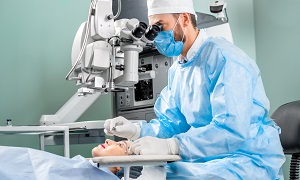Best Doctors in India for Glaucoma treatment
Best Hospitals in India for Glaucoma treatment
- City: Bengaluru, India
Hospital Highlights:
- Fortis Hospital Bannerghatta, Bengaluru was established in 2006.
- The hospital is a 276 bedded multi-specialty tertiary care facility.
- The hospital specializes in cutting-edge medical technology and dedicated patient care services.
- The hospital is equipped with state-of-the-art technologies like trans-radial angioplasty, trans-abdominal cardiac surgery, and computerized TKR navigation surgery.
- The hospital provides specialty medical services in cardiology, cardiac surgery, orthopedics, neurology, neuro-surgery, GI, and Minimal Access Surgery (MAS).
- City: Chennai, India
Hospital Highlights:
- Fortis Malar was established in 1992 and was formerly known as Malar Hospital.
- The hospital specializes in cutting-edge medical technology and dedicated patient care services.
- The hospital is multi-specialty, tertiary care facility with 180 beds.
- The hospital offers comprehensive medical care in specialties such as cardiology, cardio-thoracic surgery, neurology, neurosurgery, orthopedics, nephrology, gynecology, gastroenterology, urology, pediatrics, and diabetes.
- City: New Delhi, India
Hospital Highlights:
- Established in 1996, Pushpawati Singhania Research Institute is one of the top hospitals in the NCR region, as well as one of the top facilities in India for gastroenterology. The hospital is one of South Asia’s first institutes in medical and surgical treatment for diseases related to digestion.
- The hospital is equipped with state-of-the art facilities coupled with the latest equipment as well as renowned consultants from various parts of India as well as other parts of the world.
- City: New Delhi, India
Hospital Highlights:
- State-of-the-art technology and devoted healthcare professionals have been brought together under one roof at Venkateshwar Hospital to provide genuine medical care. The hospital’s professionals work together as a team to deliver the best possible treatment to their patients, using the most sophisticated equipment and information technology.
- Venkateshwar Hospital’s mission is to attain global excellence in healthcare by employing evidence-based, ethical clinical practices and cutting-edge technology by a team of highly skilled experts.
- City: New Delhi, India
Hospital Highlights:
- Sir Ganga Ram Hospital, New Delhi is known to provide the latest medical procedures with the latest technology in all of its units.
- The hospital has a team of reputed doctors, nurses, and healthcare professionals that ensure that patients receive quality care at affordable costs.
- Staffed with a team of highly qualified doctors, dedicated nurses, and paramedical and non-medical staff, the hospital aims to lead in healthcare delivery, medical education, training, and research.
- As per the vision of the founder, the hospital also provides free treatment to the economically weaker sections of society.
- Sir Ganga Ram Hospital also provides training to young doctors under the Diplomate in National Board(DNB) program. The DNB program at the hospital was started in 1984 and it is known for currently running the maximum number of DNB specialties in the country. It also has the distinction of having the first bone bank in India.
- City: Kerala, India
Hospital Highlights:
- Established in 2019, Apollo Adlux Hospital is the first Apollo Hospital in Kerala and the 73rd hospital owned by Apollo Group in India. With the state’s most advanced, comprehensive healthcare infrastructure and cutting-edge technologies, Apollo Adlux Hospital stands as an example of medical excellence in Kerala.
- With over 34 multi-specialty departments, the hospital believes in providing the best quality treatment to its patients at affordable rates, ensuring comfort at their difficult times.
- The 300-bed hospital is managed by a team of highly qualified and experienced experts who delivers exceptional hospitality to their patients and treats them with great compassion.
- With its affiliation with the Apollo Hospitals Group, the hospital aims in providing patients with top-notch healthcare services while also serving communities in Kerala.
- The hospital has good railway and road connections, and is conveniently close to Cochin International Airport.
- City: Gurugram, India
Hospital Highlights:
- Situated near DLF Cyber City, Gurugram, Narayana Superspecialty Hospital is one of the top medical facilities in the Delhi NCR region, catering to the needs of the people. Known for its commitment to quality medical care and patient service, the hospital is a state-of-the-art facility with planned and well-equipped sections, which includes a spacious OPD area as well as comfortable patient rooms.
- It is the closest super-specialty hospital from Indira Gandhi International Airport towards Gurugram, and also the nearest super specialty hospital from DLF Cyber City. It is also close to major residential areas in Gurugram.
- It is part of the renowned Narayana Health Group. Established in 2000, by Dr. Devi Shetty, a renowned cardiac surgeon, it has grown to be one fo India’s leading healthcare groups.
- City: Noida, India
Hospital Highlights:
- Fortis Hospital, Noida, stands as one of the oldest and most trusted healthcare institutions in the region, setting a benchmark for comprehensive medical care.
- As the second mega hub hospital in the Fortis Healthcare Group, Fortis Hospital, Noida, upholds a legacy of trust among more than 1.2 million patients. By integrating top-tier professionals with cutting-edge technology, the hospital delivers superior treatment across various medical disciplines.
- Specializing in advanced Neurosciences, Orthopedics, Kidney and Liver Transplant Programmes, Fortis Hospital, Noida has successfully performed over 1,500 transplants, solidifying its reputation as a leader in specialized medical interventions.
What is Glaucoma?
The optic nerve needs to be in a proper condition for good vision and Glaucoma is a serious condition that directly affects and damages the same. The most common cause of such damage is excessive pressure on the eyes. According to several pieces of research, Glaucoma is presently one of the leading causes that result in blindness, especially in older adults above 60 years of age.
The biggest problem with Glaucoma is that it often develops silently and you won’t be able to take proper precautions. The fact that the effect is gradual means you will only be able to realize the problem when it has already developed to an advanced stage. Since glaucoma causes an irreparable loss of vision, it is better to be careful while you still can.
The best way is to get regular check-ups done. Every visit to the Ophthalmologist must include thorough eye pressure measurements. As a result, diagnosis becomes easier from the early stages if there seems to be a problem. The silver lining to the entire story is that if Glaucoma can be detected at the initial stage, severe effects such as vision loss can be prevented or at least delayed. A person can completely get rid of the problem through proper procedures and surgeries.
What are the types of Glaucoma?
- Open-angle Glaucoma
- Angle-closure Glaucoma
- Normal-tension Glaucoma
- Congenital Glaucoma
- Pigmentary Glaucoma
An in-depth look into Glaucoma symptoms
There are several stages of Glaucoma that are often used as alternative names for the disease too. Before getting into the symptoms, you must get an idea of the fact that they differ based on the stage and type of Glaucoma that is detected in your case. The severity of symptoms also varies depending on similar conditions. In this section, we will learn about Glaucoma symptoms based on their stage and type. So, let’s begin-
Open-angle Glaucoma
- Blinding and patchy spots in the central or peripheral vision that may appear in both eyes at frequent intervals
- Tunnel vision (during the advanced stage)
Narrow-angle or Acute-Closed Glaucoma
This type is often very painful and sometimes reported as the worst version of Glaucoma. If someone is experiencing any of the below-mentioned, you should take the person immediately to an ophthalmologist for emergency treatment. If you ignore the conditions even for a day, it might lead to severe conditions and even permanent vision loss.
The following are the symptoms-
- Painful throbbing in the eyes
- Vomiting and nausea
- Eye redness
- Dilated pupil
- Headaches (can happen on just one side of the head as that of the affected eye)
- Visions of light rings or halos
- Foggy or blurry vision
Congenital Glaucoma
The term ‘congenital’ makes it clear already that the below-mentioned Glaucoma symptoms are associated with infants and children during their very early years.
- Tearing, eyelid spasms and light-sensitivity
- A habit of rubbing the eyes, keeping eyes closed for the maximum part of the day and squinting
- Larger than the normal cornea and a visible cloudy layer in that part
Secondary and other types of Glaucoma
The secondary or other types of Glaucoma symptoms depend on the causes of eye pressure. It can be anything that leads to weird visions such as halos and light rings. The following are a few common symptoms of secondary Glaucoma.
- Inflammation (also known as uveitis)
- Photophobia or light-sensitivity
- Eye injuries such as corneal edema, retinal detachment, and bleeding
Glaucoma causes
As mentioned earlier, Glaucoma is a major effect of excessive eye-pressure which eventually causes damage in the optical nerve. As a result, there is a development of blinding spots that occur in your visual field. The most common reason for eye-pressure to increase is excessive fluid build-up in the eyes also known as ‘aqueous humor’. This fluid does not flow down in the form of tears but spreads inside the eye.
It is normal if there is a limited fluid build-up that will eventually flow down through the trabecular tissue at the intersection point of the cornea and iris. However, when there is the excess fluid build-up that does not drain out properly, it becomes a problem and triggers the rise of pressure in your eyes. In some cases, Glaucoma causes also include a family history of the disease.
Basic risk factors
While you must have the basic knowledge about the major symptoms and signs of Glaucoma, it is also important to know that the chronic version of the disease may develop without such signs. So, it is also important that you are aware of the risk factors. They are:
- High intraocular or internal pressure in the eyes
- Using eye drops for a long time
- Age over 60 years
- History of eye surgery or injury
- Being black, Hispanic or Asian
- Genetic history of Glaucoma
- Being extremely farsighted or nearsighted
- Underlying conditions such as diabetes, anemia, high blood pressure and cardiac issues
- Position of the cornea
Diagnosis of Glaucoma
Treatment for Glaucoma
Glaucoma can be treated in the following ways:
Eyedrops
Oral medicines
Surgery
- Laser surgery procedure can slightly increase the flow of the fluid from the eye in open-angle glaucoma or can stop fluid blockage in angle-closure glaucoma. Laser surgery includes:
- Trabeculoplasty involves the opening of the drainage area. A tiny hole is made in the iris which allows the fluid flow more freely.
- Cyclophotocoagulation involves treatment of the middle layer of the eye to reduce fluid production.
- Microsurgery or trabeculectomy. In this procedure, the doctor creates a new channel to drain the fluid which eases eye pressure.
Therapies
So, Glaucoma is a severe condition that requires awareness and immediate attention. You must keep the risks and symptoms in mind and act responsibly by seeking proper treatment for the disease.













